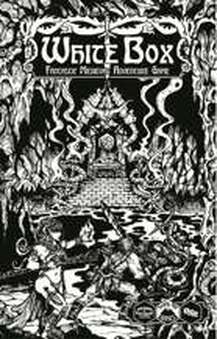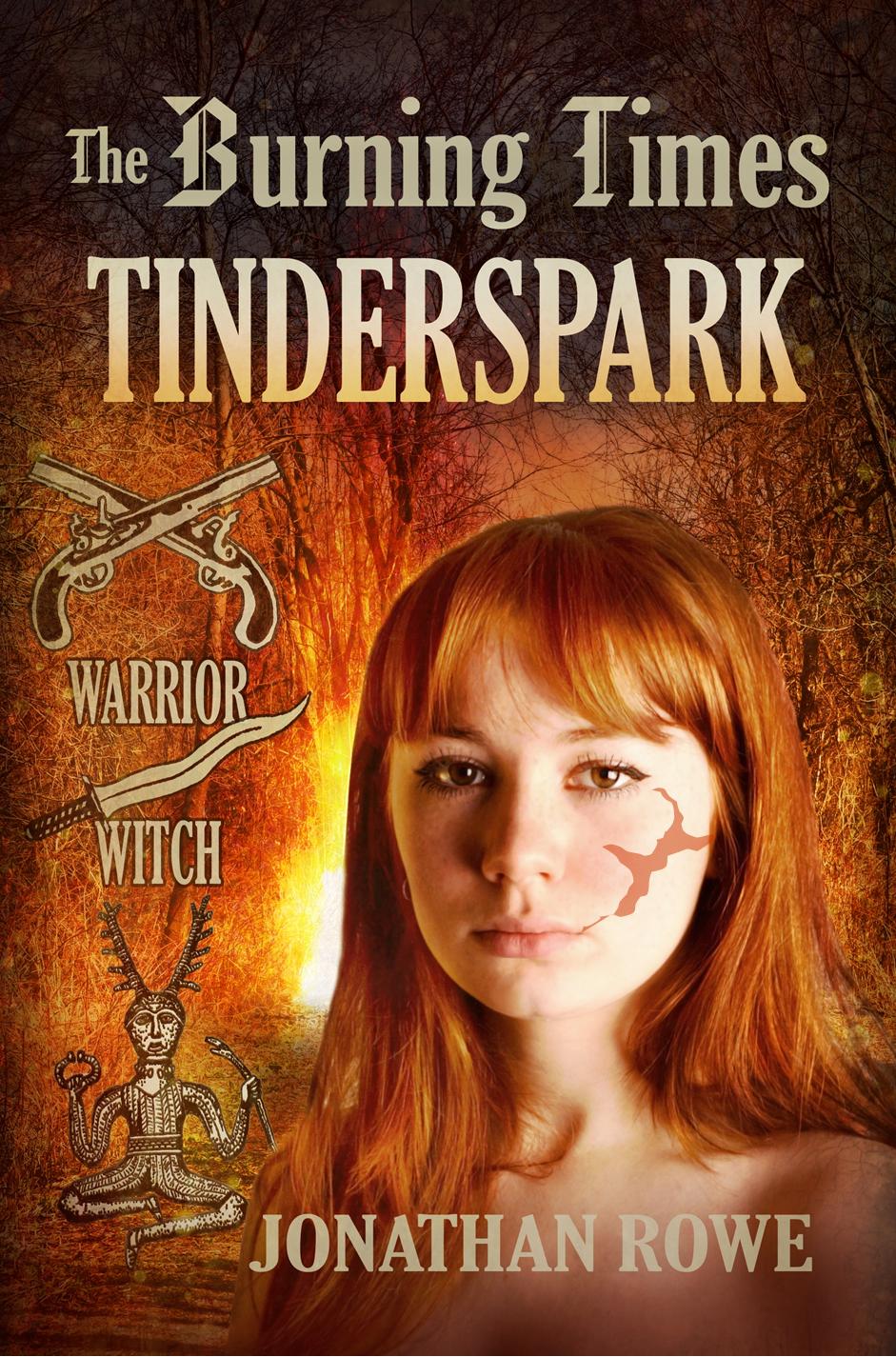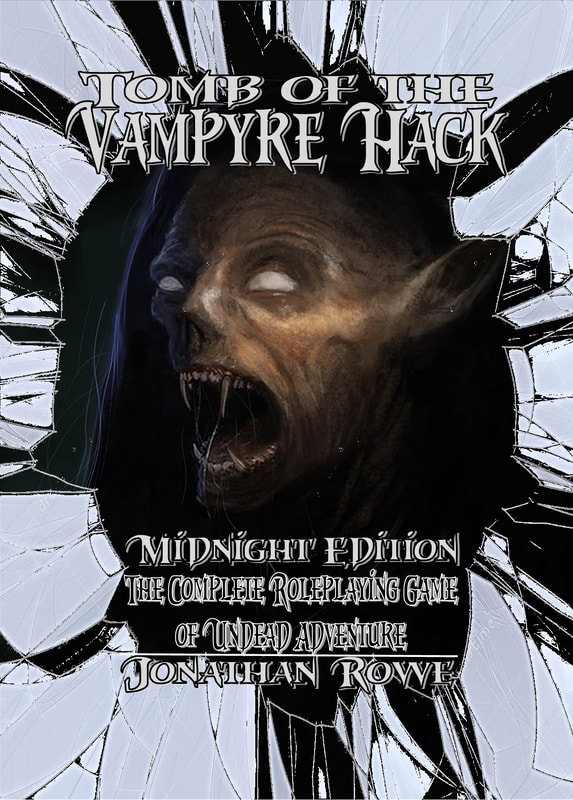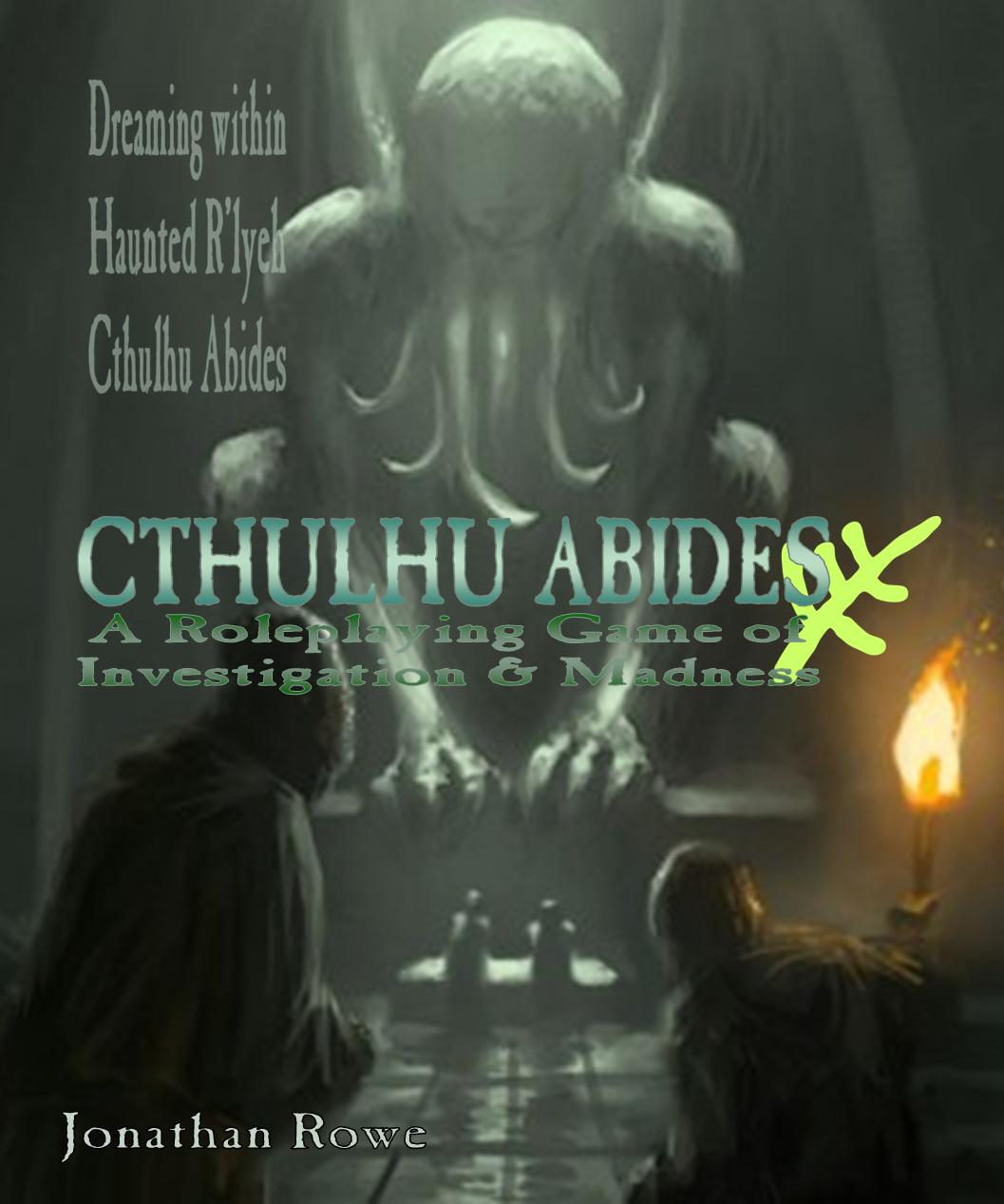|
I've been singing the praises Szymon Piecha's Expanded Lore for White Box RPG. Time for a deep delve, starting with the fresh trestment of the OD&D sub-classes. White Box in softback and PDF from drivethrurpg or Lulu and Expanded Lore PDF from drivethrurpg Szymon introduces four new character classes for White Box based on the new classes that appeared for OD&D and 1st ed. AD&D in the 1970s: The book you are currently reading is a compilation of four additional classes – the Bard, Druid, Monk, and Paladin – with house-rules, that you can use in your White Box game. It is worth mentioning that the classes and rules presented here were designed specifically for the White Box game released by Charlie Mason. This means that they are balanced and simplified in order to work well with the original four classes – the Fighter, Magic-User, Cleric, and Thief. Szymon isn't the first person to walk this path. The original Swords & Wizardry: White Box had an expansion, White Box Heroes, by Salvatore Macri, that cleaved much closer to the OD&D templates in representing these sub-classes. Let's contrast them. S&W: White Box and S&W: White Box Heroes: both can be downloaded for free The BardThe Bard subclass originally appeared in Strategic Review in 1976, created by Doug Schwegman to be a "jack-of-all-trades" character: A Bard is a jack-of-all-trades in Dungeons and Dragons, he is both an amateur thief and magic user as well as a good fighter. He is supposedly able to extract himself from delicate situations through the use of diplomacy, but since this does not always work he is given the innate ability to charm creatures. Schwegman's Bard owes more to the serious figures of the Celtic Bards and Norse Skalds rather than later medieval troubadours and jongleurs. They have Thief powers, but at half their effective level rounded down (i.e. at 2nd level they can function as a 1st level Thief) and no Backstabbing. They get Magic-User spells at 2nd level too, albeit with much slower progression. They can also Charm listeners, with effectiveness of 10% per level and deductions for undead or monsters/NPCs higher than 4HD/4th level. Their Lore ability lets them identify magic items. Since they can get to 9th level with just 150,000XP (more than Magic-Users but considerably less than Fighters and Clerics), it's safe to say they were a bit over-powered. In AD&D, Gary Gygax hobbled them, making them a split-class option for high level Fighters to change class to Druids and end up as Bards. Hardly anyone bothered. For Swords & Wizardry: White Box Heroes, Salvatore Macri goes back to Schwegman's original Bard and tidies up the XP progression a bit, rationalises the Charm/Lore abilities to a clean 1d20 check, but fundamentally leaves things as they were. Bards do Thieving and Magic, but not as well as the real Thieves and Magic-Users, and their fiddly Charm power is rather excessive. Symon Piecha comes in with a blank slate. The first thing you notice is that XP is slashed: Bards race up the levels with the same progression as Thieves, but gain Hit Dice like pusillanimous Magic-Users. The Bardic Charm has been both loosened up and restricted. It works automatically - no roll required - on a total number of HD not exceeding the Bard's level. So a 3rd level Bard could charm 3 Orcs or a single Bugbear. But gone is the suggestion power to put ideas into charmees' heads. All the power now does is make the monsters follow the Bard around, rapt and attentive, but the moment you stop performing, they revert to normal. Because this is guaranteed to work, it's an invaluable tactic. Because all it does is make monsters temporarily docile, it's not over-powered. Lore is a d6 check (neat!) just the same as Charlie Mason's take on Thievery. If successful, the Bard gets a tidbit of knowledge on any subject. On a fail, the knowledge is false. This is equivocal in usefulness, to say the least. A +2 saving throw bonus against charm powers wraps it up. That's it! No Magic-User spells, no Thief abilities. (Well, not quite. The Optional Abilities suggest all Bards can cast a single 1st level Magic-User spell once per day. Moreover, you get to choose it, rather than rolling it randomly. Do you choose Sleep for instant gratification? Or Read Magic so you can use scrolls? Or Charm Person so you can still do the ridiculous things that gave Bards such a bad reputation?) This is a very de-powered Bard - on the same level as Thieves, perhaps, but without their combat potential. The Charm power is very useful, but you need henchmen or party allies to bash monsters over the head while they are entranced. The Lore power is intriguing, especially with a creative Referee, but no one will be putting on a ring or drinking a potion just because the Bard says it's safe, or not until the Bard gets to a very high level. However, Szymon Piecha's optional Feats change the calculations somewhat. "Wise" adds +1 to your Lore, meaning even a 1st level Bard is 50% likely to be right (and Humans get a Feat at 1st level); "Charming" lets you charm monsters as if you were a level higher, so even a 1st level Bard can charm two Orcs; "Golden Tongue" lets you pick up a new and obscure language. With Feats arriving at levels 3, 5, 7 and 9, you can build a very effective Bard whose value lies in being a knowledge base and a tactical resource for debilitating several monsters in any fight. De-powered though it is, what I like about Piecha's Bard is its commitment. It doesn't try to be a jack-of-all-trades. It's not a surrogate Thief or Magic-User. It's its own thing: a musical lore-master with only a little to contribute in combat but enjoying rapid leveling up. The Charm power will influence the entire party's combat strategy. The rest is roleplaying. I feel the rule that a failed Lore roll produces a lie every time is a bit punitive. Surely, sometimes Bards just don't know things and they know that they don't know? As Referee, I'd rather check a second time to ascertain ignorance and offer a Bard PC an untruth only if the second roll failed too. The Druid Inspired, of course, by the historical Celtic wizard-priests, Druids turned up as NPC 'monsters' in the 1974 Greyhawk supplement and as a playable sub-class of Clerics in 1976 Eldritch Wizardry. The version Gary Gygax presents in AD&D a couple of years later is (understandably) little changed. While reviewing the OD&D/White Box Illusionist, I stated that I disliked multiplying spell lists, but conceded the value of Druidic spells, with their wilderness focus, given that wilderness journeys are as significant a feature in D&D as dungeons themselves. The Druidic lists include a lot of elemental magic, animal summoning and controlling, some utility spells for plants and (rather vague) weather magic. A feature of the original sub-classes that irritated me makes its appearance with Druids: gradated abilities. At 2nd level, Druids suddenly acquire the ability to identify plants and animals and pass without trace as well as acquiring obscure woodsy languages; at 6th level they can shapechange into any animal, three times a day, and heal HP when they return to their natural form. S&W: White Box Heroes takes its cue from the Eldritch Wizardry Druid, but postpones their spell-casting to 2nd level, just like Clerics. The XP progression is brought down to match Clerics (in Eldritch Wizardry, they progressed like Fighters, as they do in AD&D). As you would expect, Piecha's Expanded Lore takes a bolder approach. The most striking feature is Shapechanging, which is now an ability all Druids get at 1st level and can use once a day. You choose a small animal and a large animal and those are your only two forms. In animal form you deal 1d6 damage but your AC improves by 4 (representing your thick hide or smallness). The Optional ability rule suggests all Druids can Speak with Animals. That's a lot of mojo at 1st level. Shapechanging is only once a day, but it's got tons of utility. Speaking with Animals at will is an amazing asset and can head off many unnecessary (and unprofitable) combats as well as gathering information. What's the downside? In a word, experience. Piecha's Druids require the same XP as Magic-Users, which is a long trudge through the lower levels. Moreover, they gain Hit Dice like Magic Users too, ending up with 5+1 at 10th level, compared to Clerics with 8. The optional Feats for Druids are a bit underwhelming too, compared to Clerics and Magic-Users. Finally, although I'm not sure if Szymon Piecha intends it to be a deliberate limitation, the spell lists for Druids are very curtailed. Although there are a few striking new spells (Wild Strength stands out as a 2nd level spell), some old favourites like Faerie Fire are missing and the lower level spells are very uninspiring. As with Piecha's Bards, what we are left with is a class that will lean heavily into two regular tactics (shapeshifting and speaking with animals) and prove an asset to parties for those reasons alone. The slow progress up the levels is the price you pay. I'm unhappy about the limited spell lists and offer an expanded list, including many of the spells from S&W: White Box Heroes, to give Druid PCs a reason to look forward to leveling up, which would otherwise be sadly lacking. The Monk The Monk class was created by TSR boss Brian Blume and appeared in the Blackmoor supplement in 1974. If there's a moment when the rot set in with OD&D, this is it. The Monk, which reappeared in all its hideous glory in AD&D, shows most of the characteristics I hatew in expanded sub-classes. Firstly, there's power creep. Monks strike with bare hands and feet, for paltry damage at lower levels, but if they hit by +5 greater than they needed to roll, the target is stunned (75%) or outright killed (25%). To be fair, Gary Gygax toned down the instant kill but the stunning is bad enough. Then there are gradated abilities: at 3rd level, reduced chances of being surprised (sorry Rangers if you thought that was your thing), speaking with animals at 4th level, speaking with plants at 8th, mind-shielding, self-healing and the dreaded 'Quivering Palm' at 13th level. This mad compendium of off-the-wall abilities is partly a result of the 1970s fascination with all things Kung-Fu. There was the popular TV series from 1972-6 with David Carradine as the wandering martial artist doing good (or at least, avoiding bad) across the Old West, aided by flashbacks of his glassy-eyed mentor, Master Po. And of course, there was Carl Douglas' cash-in disco hit. It was, as they say, a little bit frightening. Wikipedia tells me the main character in a series of chop-socky action adventure novels, The Destroyer, also inspired the Monk's more outrageous abilities. Wikipedia tells me the main character in a series of chop-socky action adventure novels, The Destroyer, also inspired the Monk's more outrageous abilities. In the 1978 Players Handbook for AD&D, the Monk returns, but whereas Gygax usually tones down the subclasses for AD&D, the Monk is as ridiculous as ever, but noe immune to Slow spells and disease. Moreover, the XP requirements, that used to match Magic-Users, get slightly toned down. In the 1978 Players Handbook for AD&D, the Monk returns, but whereas Gygax usually tones down the subclasses for AD&D, the Monk is as ridiculous as ever, but now also immune to Slow spells and disease. Moreover, the XP requirements, that used to match Magic-Users, get slightly reduced. S&W: White Box Heroes gives us the Monk in all its original ugliness, with insta-kill kung-fu, but with the XP requirement dialed back further, to match up with Clerics. What nonsense is this? Piecha's version of the Monk for Expanded Lore levels up like a Fighter but gains Hit Dice like a Magic-User (the same as the previous two sub-classes). They attack with their bare hands (if they want to) for 1d6 damage and can do so twice a round, but this never improves. No stunning. No kung-fu insta-kill. The familiar sliding scale of Armour Class has gone: Monks do not wear armour and they don't get a boosted AC to compensate. Welcome to the world of being hit a lot. Monks do get a range of minor abilities inspired by the original and all at 1st level: they can make saving throws to dodge missiles, they take no damage from falls, they can run up walls. That's it. No talking to plants or mind-shielding or self-healing or 'Quivering Palms'. You are an unarmoured martial artist. Good luck. It isn't quite that austere. The optional ability is a meditative trance: once per day, the monk can meditate for one hour to heal 1d6 HP and purge all poisons from her body. I admire the boldness with which Szymon puts the horrible Monk powers to the torch, but I wonder, has he gone too far? This is another class with nice options at first level (two 1d6 attacks is fantastic, personal healing is great) but nothing much to look forward to as they level up. The optional Monk Feats only offer minor bonuses (to unarmed attacks, to dodging missiles, to personal healing) but I feel Szymon missed a trick not smuggling some of the old Monk features back in this way. I offer some alternative Feats that give Monks a taste of their former glory - in moderation. The Paladin Last, but never least, comes the sub-class we never needed. Clerics were already holy warriors, so naturally there must be a class that's holier than a cleric and a better warrior than a cleric. The holier-than-holy warrior: the Paladin. The patron saint of Power Creep, the Paladin appeared back in 1974 in the D&D Greyhawk Supplement. At that time, they were Lawful Fighters who had the good luck to roll up a 17 Charisma. In return for this, they enjoyed +2 to all saving throws, the 'laying on hands' ability to cure HP and diseases, immunity to disease and the option to summon a steed - the 'Mount' - with enhanced abilities. Because all bad things must have gradated powers, they discover the ability to detect and dispel evil at 8th level. So here are my pet peeves brought together. The faulty notion that giving a sub-class high prerequisites imposes some sort of limitation on it or reduces its occurrence in a campaign - nope and nope - wedded to gradated abilities that let the class outshine the main players in D&D (Fighters and Magic-Users) at mid and high levels too. The only actual limitations imposed on Paladins are a joke: they are 'limited' to owning 10 magic items (armour, shield, 4 weapons and 4 miscellaneous) and must give away their treasure - after they've claimed XP for it, of course. In AD&D, Gary Gygax reintroduces the Paladin, still with the absurd 17 Charisma requirement. Now they detect evil from the outset and enjoy Protection from Evil around them, like a force field. They can turn undead and cast Cleric spells at higher levels. It's disgraceful. Set against these bounties, Gygax postpones their horrid Mount until 4th level and ups their XP requirement to the highest in the game, higher than Magic-Users. But really, so what? Not everything about the AD&D Paladin was awful: A Paladin in Hell by David C Sutherland As we now expect, S&W: White Box Heroes reinstates the Greyhawk Paladin, warts and all (if a 17 Charisma allowed you to have warts - and a Paladin would be immune to them anyway, dammit). The XP requirement is reset to match normal Fighters. A high base Saving Throw (16+) somewhat offsets the +2 bonus to all saving throws. The War Horse arrives at 1st level but you have to wait till 9th to detect and dispel evil. No turning undead or casting Clerical spells, thank the gods. What does Szymon Piecha do with this monstrosity? For a start, the Charisma requirement is gone. Welcome, squint-eyed Paladins with halitosis! For another, XP progression goes up to match Magic-Users and there's no +1 HP bonus at 1st level like ordinary Fighters. Neither do they get the Combat Fury that ordinary Fighters enjoy against 1 HD monsters. Good. Laying on Hands is cut back to healing HP, not diseases, but has the option of 'smiting' Chaotic creatures instead, dealing the HP as bonus damage. I've no problem with that. Paladins are immune to fear and mind-influencing magic. That's significant. The +2 saving throw bonus only applies to the powers of undead/demons - and comes at the expense of the standard Fighter bonus against poison/death. The base Saving Throw is an outstanding 13+, the best in the game. However, their bonus to hit doesn't scale as fast as regular Fighters (but still better than Clerics and they catch up with Fighters at 10th level). If you thought we'd escaped the Paladin's Mount, guess again. It is introduced as an Optional Ability. There are changes though. The nag has only got 4HD and, if it dies, the Paladin loses 1 Charisma and waits a year (not a decade) to get a new one. The optional Feats allow Paladins to do things like casting Bless or Detect Chaos twice a day, bonus damage against undead, extra-effective healing hands and some combat feats that match what Fighters can do. This lets you construct a more 'classic' Paladin if you want to. I'm surprised turning undead as a 1st level Cleric didn't feature as a Feat too: so long as the Paladin cannot get better at it, why not let them do that? The Piecha-Paladin gets a lot right. Gone are the blatant supernatural buffs and the limelight-stealing Clerical powers. This Paladin is less a holy saint, more a zealous obsessive. The immunity to fear/mind-control is a really significant ability and one a party of adventurers can build a strategy around: no longer will Harpies defeat entire groups of PCs; one brave soul at least will stand firm. The Optional RulesNow the controversial stuff. These are Szymon Piecha's house rules for his White Box campaign and he introduces them tentatively: ... the additional rules strongly modify the core rules of the White Box game and are designed for long campaigns. They are very optional and most purists may see them as too modern. Still, they are designed to keep the game simple, yet interesting (and most importantly – fun). Covering what these rules are won't take long. But evaluating the impact they have in play draws us into the whole topic of what OSR is - or what it ought to be - and moves White Box away from being a simulation of early Gygax/Arneson D&D into being a D&D-inspired game of its very own. And that, I think, deserves a separate blog post all of its very own.
0 Comments
Leave a Reply. |
30 Minute Dungeons
Essays on Forge
FORGE Reviews
OSR REVIEWS
White Box
THROUGH THE Hedgerow
Fen Orc
I'm a teacher and a writer and I love board games and RPGs. I got into D&D back in the '70s with Eric Holmes' 'Blue Book' set and I've started writing my own OSR-inspired games - as well as fantasy and supernatural fiction.. Archives
July 2024
Categories
All
|











 RSS Feed
RSS Feed
























